Online Graphic Design Marketing Advertising Degree
BA (Hons) Graphic Design: Advertising and Branding
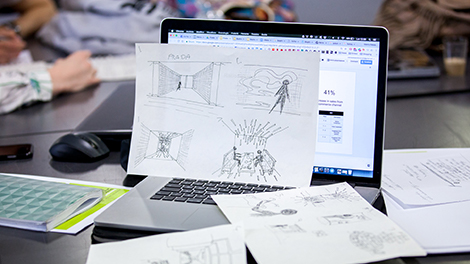
Work on industry briefs set by high profile brands like Mini and Prada
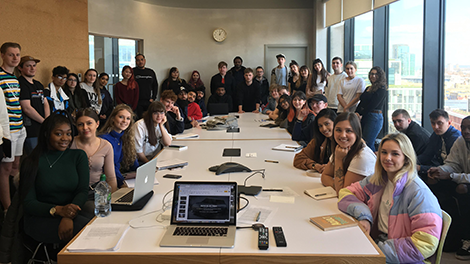
Be inspired by our partnerships with creative agencies
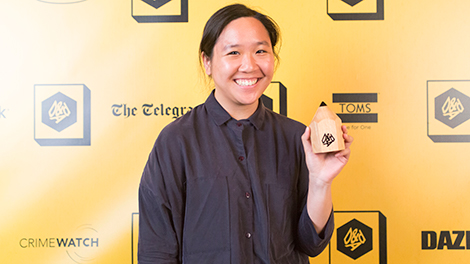
Our students have a phenomenal record in winning prestigious awards
This course includes the options of:

Work placement*

Study abroad*
*No fees are charged for this year
- Key information
UCAS code
- W215
Institution code
H36 School of study
School of Creative Arts Course length
- Full Time, 3 Years
- Sandwich, 4 Years
Location
- University of Hertfordshire, Hatfield
- Entry requirements
UCAS points A Level BTEC 104-112 BCC-BBC MMM-DMM Additional requirements
- Access course: Diploma with 45 level 3 credits at merit.
- Portfolio: Presentation of an acceptable portfolio of artwork.
- IB requirement: 104-112 UCAS points from a minimum of 2 HL subjects at H4 or above, to include Visual Arts at SL or HL (with the remaining points to come from a combination of HL, SL and Core).
- IELTS: All students from non-majority English-speaking countries require proof of English language proficiency, equivalent to an overall IELTS score of 6.0 with a minimum of 5.5 in each band.
If you do not have the required IELTS or equivalent for direct entry on to your degree programme, our Pre-sessional English and International Foundation courses can help you to achieve this level.
For more details on the University of Hertfordshire's entry requirements, please visit our Undergraduate Entry Requirements page.
Find out more about International Entry Requirements.
The University of Hertfordshire is committed to welcoming students with a wide range of qualifications and levels of experience. The entry requirements listed on the course pages provide a guide to the minimum level of qualifications needed to study each course. However, we have a flexible approach to admissions and each application will be considered on an individual basis.
- Sign up for alerts
Get access to personalised content, tailored towards your interests:
- Information on your favourite courses
- Tips to help you through the application process
- Blogs, vlogs and advice from current students
Form successfully completed. Thank you.
Please check, and fix the following possible errors:
Why choose this course?
Creativity, collaboration, tech and big ideas. If you think you want to work in advertising or branding, but you love graphic design, this could be the course for you. Design is the (not-so) secret weapon behind every innovative brand, beautiful magazine, eye-popping piece of print and jaw-dropping digital interface. Learn its secrets and carve out an influential career working with the biggest firms or apply your talents to make a positive impact on the world around you. This pathway lets you focus on the specialist skills you'll need to work in the industry, learn the latest software and make lifelong friendships with like-minded creatives.
The teaching team have worked at the top end of the design, advertising and branding industry and now want to pass on their knowledge, expertise and connections to the next generation of creatives. In recent years, our students have worked on live briefs with the likes of Lacoste, Sky, Mini and collaborated with students from Yale University is the US on a brief set by Prada. We've also partnered with some of the world's leading creative agencies including Droga5 and DesignStudio (the designers of the Premier League, Airbnb and Deliveroo branding).
It's a powerful mix of freedom, inspiration and support that prepares you for an incredible career. In fact, it's earned our students over 100 major awards in recent years, including at least one D&AD pencil every year since 2011. So, join our community and turn your creativity into a career you love. Who knows? Maybe you'll be next.
What are the facilities like?
Amazing. Learn in our vibrant, dedicated studio spaces and Mac labs. Do your research in our 24/7 library. Use our professional-quality photography, TV and motion capture studios. And borrow all the tech you need to create mind-blowing work.
What's the course about?
Teaching is mainly project-based, supported by skills-based workshops. You'll tackle a huge variety of briefs ranging in complexity and time scales. We encourage a competitive, demanding yet light-hearted atmosphere and pride ourselves on providing a lot of direct contact between staff and students. We also organise an annual international study trip, as well as visits to agencies, museums and galleries in London.
You'll spend your first year immersed in our studio, getting a solid grounding in print and digital projects, working alongside our Illustration students. You'll be constantly challenged, supported and encouraged as you learn technical skills, experiment, take risks and push new boundaries.
You'll begin by learning the understated power of typography, logo design, brand identity and layout – fundamentals that will underpin your craft, whatever direction you take. With them under your belt, at the end of the year you'll have the option to continuing with Graphic Design: Advertising and Branding or switching to the regular Graphic Design pathway.
In your second year, you'll take more of a professional focus, working on live briefs, developing your portfolio and building a CV. You'll learn about art direction, copywriting, campaign development, brand strategy and how to design dynamic visual identities. Fancy exploring motion graphics in more depth? Want to build your online presence? We've got you.
There's the chance to explore everything today's tech has to offer, crafting your website, building your social media profile and creating a unique narrative that shows top design employers what an amazing designer you are. You'll learn how to approach agencies and visit studios. Throughout the course we'll help you to investigate, understand and critique the history of the subject, the theories behind what's happening in contemporary design as well as looking into future trends.
Work placement/study abroad option: Between your second and final year, you'll have the option to study abroad or do a work placement for up to a year. Not only will this give you an amazing experience to talk about but will also give your CV a boost. If you'd rather go straight to your final year, that's absolutely fine too.
By the time you start your final year, you'll have a solid understanding of design and the specialisms that fire your imagination. You'll pick from a huge range of creative projects, workshops and live briefs as well as developing your own self-directed projects — building a completely personal, standout portfolio. We'll encourage original thinking, but we'll also give you tons of support, inspiration and encouragement.
And we won't be the only ones. Throughout your course, we'll invite amazing designers to lead workshops, set projects and become your mentors. Our proximity to London means it's easy for us to invite people doing the most innovative and exciting work with us.
It's a powerful mix of freedom, inspiration and support that prepares you for an incredible career. In fact, in recent years it's earned our students award wins in all the most coveted competitions including D&AD yellow pencils, Creative Conscience Gold medals and YCN awards. So, join our community and turn your creativity into a career you love. Who knows? Maybe you'll be next.
Your main campus is College Lane
This is where the creative arts, science and health-related subjects are based. This means you'll share the campus with future nurses, scientists, artists and more. You can use the common rooms to relax with friends, work out in the 24-hour gym or have a drink in our on-campus pub or cafes. We also have restaurants for you to eat in or grab something on the go. Our Learning Resources Centres are open 24/7, which means you can study whenever suits you best. Want to pop over to the other campus? You can take the free shuttle bus or walk there in just 15 minutes.
What will I study?
Degree programmes are structured into levels, 4, 5 and 6. These correspond to your first, second and third/final year of study. Below you can see what modules you'll be studying in each.
- Level 4
Module Credits Compulsory/optional Visual Communication 45 Credits Compulsory This module comprises an intensive series of studio projects and supporting workshops aimed at introducing research, idea-generation and craft skills as core components of the design process. Students will be required to research, gather, edit and analyse found and self-generated content and develop skills in arranging and presenting visual material. In addition, a programme of lectures from staff, Level 5 and 6 students and alumni will introduce students to the worlds of graphic design and illustration, thus providing the information and opportunity to allow students to make an informed decision about their future pathway choice. This decision is also carefully monitored and evaluated by studio staff by helping students to identify the strengths evident in their work. Visual Thinking: Histories, Theories and Context 30 Credits Compulsory This module aims to encourage students to see critical and cultural aspects of graphic design and illustration as integral to the development of their practice and a vital component of innovative, well informed, professional work. A programme of lectures, seminars, tutorials, and workshops, will introduce the history of graphic design and illustration and some of the ways in which key movements and individuals have shaped contemporary design practice and debate. Indicative module content may include: artisanship; industrialisation and reactions to it; consumption and retail; modernism and post modernity and how design is shaped by aesthetic, social, political, economic, cultural, ecological, digital and professional contexts. The module will enable students to explore the relationship of these issues and contexts to their own practice and begin to locate their practice within a wider contextual and professional framework. Graphic Design Essentials Part 1 45 Credits Compulsory This module is intended to embed students on the graphic design pathway and will introduce core skills and knowledge in typography and layout, both in printed and digital form. There is a strong emphasis on research, idea generation and problem solving that leads to the development and realisation of design solutions. Alongside the rigours of core practice, we encourage an experimental approach to thinking, idea generation and development and mark making. Typography and design software workshops will dovetail with a series of mid-length design projects such as the design of multi-format editorial items, posters, simple visual identities and packaging. If the 'Graphic Design: Advertising and Branding' award is available as an option for students to pursue in Levels 5 and 6, this module will also have a 'diagnostic' element, which will allow students to make an informed choice which pathway to choose. Projects exploring graphic design, advertising and branding; as well as a series of talks from staff and Level 5/6 students will give Level 4 students an idea which pathway might suit their skillsets or career ambitions. The choice of which pathway to choose will be made in conjunction with academic staff before the module finishes. - Level 5
Module Credits Compulsory/optional Year Abroad 0 Credits Compulsory The Year Abroad will provide students in Creative Arts with the opportunity to expand, develop and apply the knowledge and skills gained in the first two taught years of the degree within a different organisational and cultural environment in a partner academic institution. The host institution will appoint a Programme Co-ordinator who will oversee the student's programme during the Year Abroad and will liaise with the appointed UH Supervisor. Contextualising Contemporary Practice 30 Credits Compulsory This module encourages students to see critical and cultural studies as a vital tool for innovative and well informed practice. It offers students the opportunity to explore a range of theoretical positions that inform recent and contemporary practice. Students will be asked to use the findings to reflect critically upon their own work and to locate their practice within the context of historical, social, political, cultural, environmental and theoretical perspectives. Indicative themes will include the various cultural perspectives that have shaped design practice in industrial, post industrial and international contexts, issues of representation, gender, globalization; class; theories and debates surrounding production, circulation and consumption. Graphic Designs Essentials Part 2 30 Credits Compulsory This module builds on the first pathway module in Level 4 (Graphic Design Essentials Part 1) and aims to both reinforce core skills, knowledge and creative application, whilst introducing students to essential digital-facing skills such as interaction, user experience, animation and narrative. Flexible and agile digital design skills are delivered via a series of workshops and these are tested through a series of appropriately professionally-focused projects. Graphic Design Professional Development 15 Credits Compulsory This module aims to allow students an insight in to the world of graphic design via a reflective journal that explores the individuals 'state of learning' and also through a study of a number of leading design practices. A self-authored journal addresses a number of professionally related themes and encourages students to reflect on their developing thoughts, opinions, beliefs and professional aspirations as emerging designers. An aspect of this journal further encourages students to consider the work of professional studios or agencies in relation to their own work as students. Fundamentals of Advertising and Branding 15 Credits Compulsory This module acts as an introduction to the advertising and branding industries - explaining how creative and branding agencies work, the various roles within them and the types of work they produce. Typically, a series of lectures and short workshops would explore key skills including strategy and campaign development, art direction, copywriting, pitching to clients and the creation of visual identities. The module will prioritise working quickly to develop multiple ideas and solutions to set briefs, replicating the experience of working with these fields. Practitioners are commonly expected to work on multiple projects at once, many with short turnaround times, either as an individual or in collaboration with other team members. By the end of the module, students would typically have a clearer idea of their potential career aspirations. Live Briefs: Advertising and Branding 30 Credits Compulsory This module provides a crucial opportunity to put into practice all the skills, understanding and knowledge acquired thus far on the programme. Key activities will be focused on one or more practical design briefs drawn from the various national and international design competitions, as well as at least one opportunity to work on a brief set by a professional external client. These projects are designed to significantly raise the students' working efforts and standards in preparation for producing professional and competition standard work. Professional Work Experience 15: Design 15 Credits Optional Students may identify a work experience opportunity or have a work experience suggested to them. Before starting students meet with the Programme Leader or their nominated tutor, to agree the impending placement. All aspects of the intended experience are addressed from health and safety to client confidentiality and students are given guidance on behaviour and how to manage expectations. Proposals need to identify an outline work programme, the number of days in placement and the main learning outcomes; and are subject to agreement of the Programme Leader. Professional Work Experience 30: Design 30 Credits Optional Students may identify a work experience opportunity or have a work experience suggested to them. Before starting students meet with the Programme Leader or their nominated tutor, to agree the impending placement. All aspects of the intended experience are addressed, from health and safety to client confidentiality and students are given guidance on behaviour and how to manage expectations. Proposals need to identify an outline work programme, the number of days in placement and the main learning outcomes and are subject to agreement of the Programme Leader. - Study abroad
An opportunity for an amazing experience, which will help make you stand out from the crowd. With more and more companies working internationally, experience of living in another country can make a great impression on future employers.
This course offers you the opportunity to enhance your study and CV with a sandwich year abroad. The University has partnerships with over 150 universities around the world, including the USA, Canada, Asia, Africa, Australia, South America and closer to home in Europe.
If you study abroad between your second and third year of study, you'll pay no tuition fee to the partner university and no tuition fee to us either. We'll ask you to make your decision in your second year, so there is plenty of time to think about it.
Find out more about Study abroad opportunities
Please note Erasmus+ funding is only available until May 2023. For students starting their course in September 2022 and wishing to study abroad in 2023-24 or 2024-25, please refer to the Turing Scheme.
- Work placement
Graduate with invaluable work experience alongside your degree and stand out from the crowd.
This course offers you the opportunity to enhance your study and CV with a work placement sandwich year. It's a chance to explore career possibilities, make valuable contacts and gain sought after professional skills.
Our dedicated Careers and Employment team are here to help guide you through the process. Our students are currently on, or have recently completed year-long placements with Urban Outfitters, The Body Shop, Disney, River Island, Ocado as well as many smaller design studios. The University also offers a 'self-employed' placement year which helps students set up their own practice.
If you take up a work placement between your second and third year of study, at the University of Hertfordshire you'll pay no tuition fee for this year. We'll ask you to make your decision in your second year, so there is plenty of time to think about it.
Find out more about work placements
- What if I need support?
We're right here. This course is all about creativity and community, so your tutors will be right beside you in the studio, rolling their sleeves up and getting stuck in. Need them outside study times? No problem. Pop in for advice, answers or just a friendly chat.
You'll be part of a small teaching group, so you'll also build supportive relationships with other students. Get together for our pub quiz, events and exhibitions, or stick around for after-school club on Thursdays and do your thing alongside our whole graphic design and illustration family.
We've also got a dedicated student experience team, here to make sure you're happy at Herts. So, if you ever feel you're struggling, drop in and say hello. They'll help you find all the advice, care and reassurance you need.
For help with study skills, including referencing, essay writing and presentations, you'll have access to our academic support services. You can attend workshops, 1-to-1 sessions and online tutorials. Both our LRCs (Learning Resources Centres) run drop-in study skills sessions. And the best thing is, it's all free.
Check out our student blogs
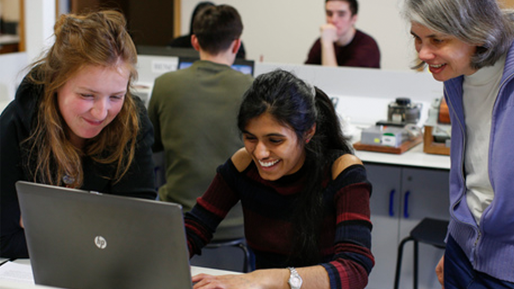
Student Blogs
Neofytos - My week at a glance
My week at a glance.
My week starts by attending to my studio space, which it is a corner made up of three big whiteboards, a locker to secure my belongings and a table to work on. I personally love that space! It always makes me feel good! Having this area to work and do research for projects that I have been given, make me feel focused and productive.
On Tuesdays I have a lecture which is about two or two and a half hours, depending on how much we need to cover. In our lecture, we talk about theories that could be beneficial to our artistic perspective, but we also use this time to talk about anything that involves group assignments and projects.
Wednesdays for me only consist of an hour of optional art talks. During these talks, we have the chance to attend a seminar where artists are presenting their work to us! That's an amazing way to be provided with an insight into how the industry works and be prepared for our working lives after graduation.
Lastly, we have our optional life drawing sessions which run every Thursday's afternoon is a great chance to have a little break from spending most of your time in your studio space working on your projects. Going to the life drawing session I have the great chance to see the human figure, as well as being given the fantastic opportunity to draw models.
As for Friday, I have nothing booked on, so I can spend most of my time in my studio space working on my projects without getting distracted!
I love my routine at university, it gives me both the time to work on my projects thus attend and organise sessions and group works.
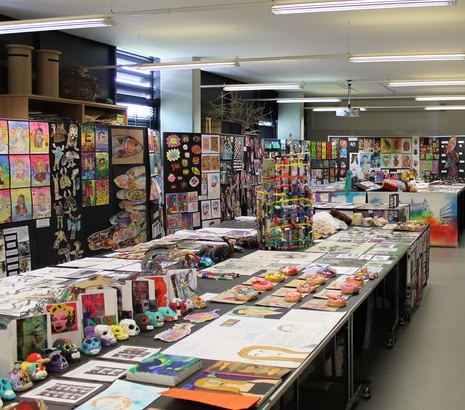
Student Blogs
Neofytos - Why I love my Course
What I love most about my course.
For years I have been drawing, painting and sculpting - prompting me to study Fine Art BA(Hons). And as a result, I have expanded my knowledge and learned more about fine art in greater depth about what I love.
The facilities at the Art and Design building are just amazing! That is what I love the most about my course. As a Fine Art student at this university, I have the great chance to take part and work in different workshops such as printmaking, ceramics, textile, welding, life drawing and so many more. For me, that is the most beneficial factor, because in this way the University allows me to explore and learn more about my artistic direction by trying different mediums and methods. Therefore, by having the freedom to attend to different workshops, I have the great chance to meet people from different courses, make new friends with similar interests and even more have the chance to collaborate with some of them!
As I said I love my course because it allows me and supporting me to try expanding horizons and find my artistic voice in an extremely healthy way.
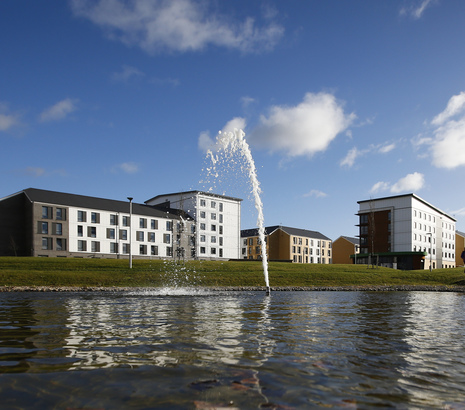
Student Blogs
Neofytos - Why I chose Herts
Why I chose Herts.
I am an international student studying at the University of Hertfordshire, which has been a blessing!
I chose Herts because the University itself is such a wonderful place to study! The facilities and the two beautifully designed campuses that the University has made my studies here amazing! For instance, there are two huge Learning Resource Centres (LRCs) on both campuses at the university where it really helps the students with their assignments. Moreover, all the buildings where we have classes at are very new and that proves that the university cares about its appearance and invest a lot of money for the students to have a great environment to study within.
However, except for the excellent facilities that the university has, the University has a great spot for socialising. Cafes, restaurants, common rooms, gyms, and a big University club are factors that make Herts a great place to be. All of them are found near to each other which is very convenient for us as students to socialise easily.
Speaking of location, the University is not far from London which is an amazing thing since London is such a beautiful and diverse city!
All these were the factors that made me choose Herts and I have never regretted my choice!

Alumni Stories
Sam Sampson
Meet Sam Sampson who utilised the flexibility of his degree to discover his passion. Since graduating in 2017, he has been working as a Junior Creative at Wasserman Experience.
Read more stories Find out more about this course
| Current job role | Junior Creative |
|---|---|
| Year of graduation | 2017 |
| Course of study | BA (Hons) Digital Media Design |

Flexible studying opportunities
When Sam came to study at the University, he was a Philosophy student but ended up changing his major to Digital Media Design. 'Luckily, the humanities department provided a major/minor split in my studies. This meant whilst I was studying philosophy, I could pick from a range of other courses that I had not considered. I chose "New Media Publishing" and found that it was much more aligned to my personality, so I changed to a full creative degree. If it had not been for that system, I would not be in my current role.'
Flexibility is a key way in which the University supports students to tailor their studies to fit their lives and best suit their skills and career aspirations. This is part of our commitment to recognise potential and nurture talent, providing students with fantastic opportunities and experiences. Sam says, 'the University of Hertfordshire truly shaped me personally as well as my career. I can guarantee that no other University would have provided me with the same opportunities they did and I can confidently say that if I had not studied here, I wouldn't be as happy in my career as I am today.'
Supporting athletes
Sam is also an athlete and was fortunate enough to qualify for the sport scholarship programme due to his involvement in judo. Extracurricular activities such as these enhance the student experience, giving students multiple ways to develop and uncover their potential. Sam says, 'The performance gym (Performance Hertfordshire) is a truly spectacular facility for all athletes. The staff are very highly qualified and provided me with ongoing support via specialised training regimes, nutritional advice and physiotherapy that was imperative to my performance as an athlete. I could not recommend Performance Hertfordshire enough.'
Sam began his studies uncertain of what he wanted to do or how his future career would unfold. However, through the support and ingenuity of the University's degree programmes, Sam has been able to discover potential he hadn't previously recognised and enter an industry that suits his skills and interests.
The University of Hertfordshire truly shaped me personally as well as my career. I can guarantee that no other University would have provided me with the same opportunities they did and I can confidently say that if I had not studied here, I wouldn't be as happy in my career as I am today.

Alumni Stories
Elise Robinson
Meet Elise Robinson who has used her degree and creativity to propel her career. Elise currently works as a Marketing Project Senior at Marshall Amplification plc.
Read more stories Find out more about this course
| Current job role | Marketing Project Senior |
|---|---|
| Year of graduation | 2014 |
| Course of study | BA (Hons) Graphic Design |

Currently, it's Elise's job to ensure smooth communication between the design and communications teams and other parts of the business. 'It's a bit like being an account manager for a design agency but in-house, where the other departments are your clients. I've taken a slight sideways step from a creative role to a management role, but it's my creative background and experience that helps me make informed decisions for the business.'
Embracing a different path
Having studied Graphic Design at Herts, graduating in 2014, and originally intending on leading a creative career in a commercial area, Elise soon embraced the opportunity of changing course and pursuing a more meaningful pathway.
Her degree provided her with a very broad understanding of cross platform campaigns and what it takes to deliver them. While she may not be in a creative role now, that broad understanding means she can confidently represent the creative teams and make strategic decisions.
Elise says she chose to study at Herts as the Graphic Design course reflected her career ambitions. She thinks choosing a Graphic Design course is a very personal choice because they vary so much. Some are very fine art focused, and some are much more commercial/business orientated. She wanted the latter, and Herts offers a very practical, business-orientated course that suited her and reflected the type of career she wanted to go in to.
Commercial experience
The commercial elements of the course alongside the industry exposure Elise received during her studies enabled her to develop an impressive wealth of experience and contacts which she could take with her into the professional world. 'The contacts I made whilst at university (printers, artists, clients and more) have been invaluable in my career so far. As the course was mostly practical design projects you had to go out and find suppliers and people to collaborate with.'
A wide set of skills is always attractive to an employer, especially when entering a creative role. Possessing a comprehensive skill base will make you even more employable. Elise encourages students hoping to follow a similar career path to diversify their skillset by exploring related disciplines. 'If you can do graphic design, why not also brush up on your photography, web design or illustration?'
- What's next for my career?
Recent graduates of our Graphic Design programme are working in some of the most highly-regarded advertising agencies and with many of the world's leading brands. The staff team's network of contacts help secure placements for our students, and we prioritise maintaining an extensive alumni network, with regular reunions where current students can meet and learn from those now in industry. This course would prepare you to work as an art director, advertising creative, brand designer, brand strategist, copywriter or help you set up your own business.
- View our Alumni profiles
- Key staff
Nick Lovegrove
Programme Leader for Graphic Design & Illustration
Find out more about Nick LovegroveRich Mitchell
Senior Lecturer in Graphic Design
Find out more about Rich Mitchell - Further information - includes assessment method
Course fact sheets BA (Hons) Graphic Design: Advertising and Branding Download Programme specifications BA (Hons) Graphic Design: Advertising and Branding Download Additional information Sandwich placement or study abroad year
Optional
Applications open to international and EU students
Yes - How to apply?
2022
Start Date End Date Link 19/09/2022 31/05/2023 Apply online (Full Time) 21/09/2022 31/05/2023 Apply online (Full Time/Sandwich) 20/09/2022 31/05/2023 Apply online (Full Time/Sandwich) 2023
Start Date End Date Link 19/09/2023 31/05/2024 Apply online (Full Time) 21/09/2023 31/05/2024 Apply online (Full Time/Sandwich) 20/09/2023 31/05/2024 Apply online (Full Time/Sandwich) - Interview
Apply through UCAS. If you've got the grades/predicted grades and you're a good fit, we'll invite you to an interview. Leave your suit at home and come for an informal chat about why you'd love to take the course. We want to hear what kind of design really interests you and what you know about the industry.
You'll also need to bring your portfolio – approximately six to ten pieces of work that show off your potential and represent the kind of design you love. Present them well and explain your design process and ideas. It really doesn't matter if you've never studied graphic design before, as long as you can think of original and clever concepts.
- Fees and funding
Fees 2021
UK Students
Full time
- £9250 for the 2021/2022 academic year
EU Students
Full time
- £13450 for the 2021/2022 academic year
International Students
Full time
- £13450 for the 2021/2022 academic year
Fees 2022
UK Students
Full time
- £9250 for the 2022/2023 academic year
EU Students
Full time
- £14000 for the 2022/2023 academic year
International Students
Full time
- £14000 for the 2022/2023 academic year
*Tuition fees are charged annually. The fees quoted above are for the specified year(s) only. Fees may be higher in future years, for both new and continuing students. Please see the University's Fees and Finance Policy (and in particular the section headed "When tuition fees change"), for further information about when and by how much the University may increase its fees for future years.
View detailed information about tuition fees
Read more about additional fees in the course fact sheet
Other financial support
Find out more about other financial support available to UK and EU students
Living costs / accommodation
The University of Hertfordshire offers a great choice of student accommodation, on campus or nearby in the local area, to suit every student budget.
View detailed information about our accommodation
Due to the ongoing Coronavirus pandemic, examinations may be replaced by an alternative form of assessment during the academic year 2021/2022. Please refer to the Programme Specification on these pages for further details.
Online Graphic Design Marketing Advertising Degree
Source: https://www.herts.ac.uk/courses/undergraduate/ba-hons-graphic-design-advertising-and-branding